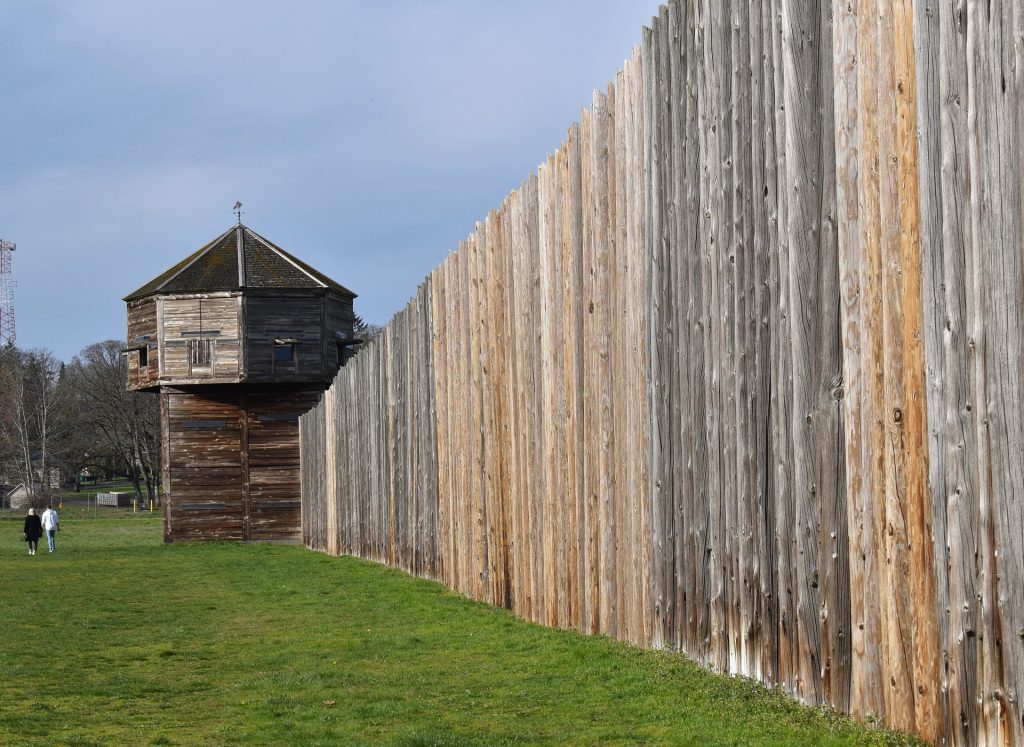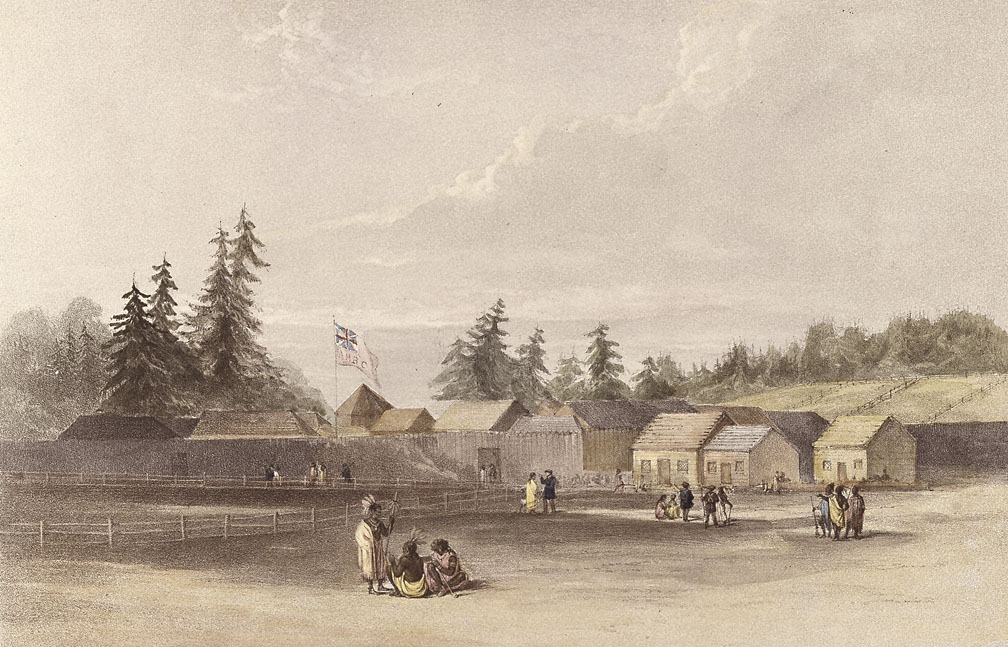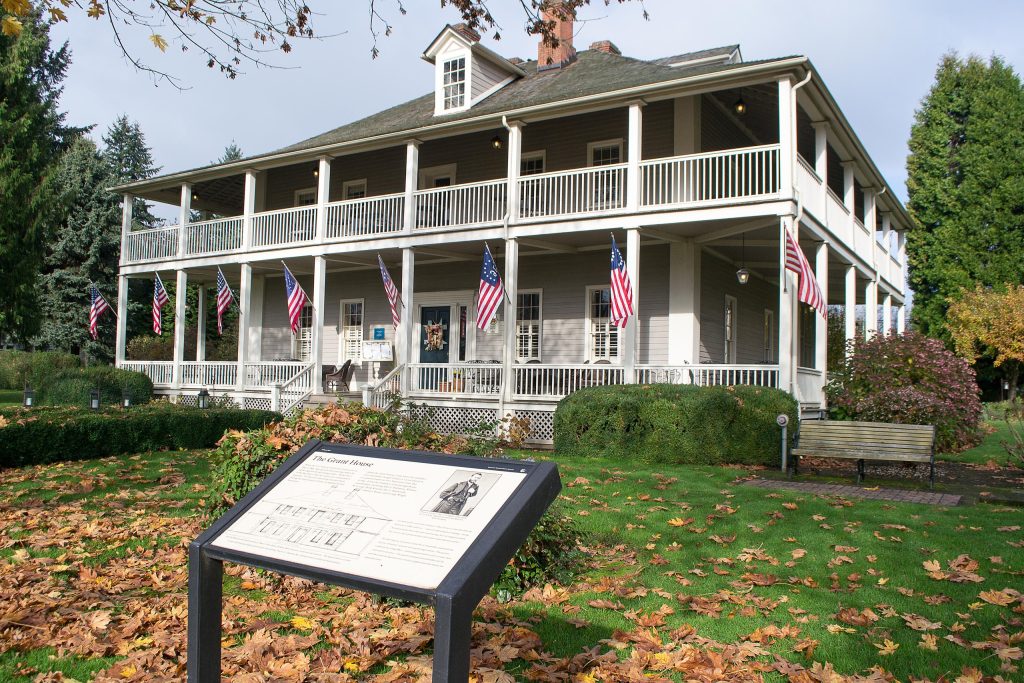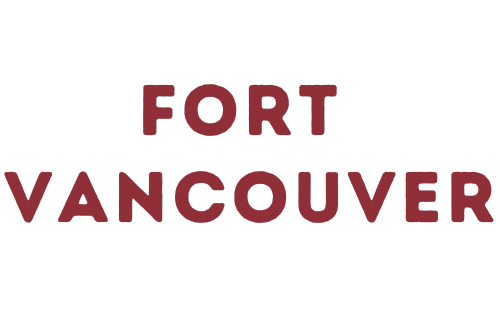Fort Vancouver History
Fort Vancouver: The Birthplace of the Pacific Northwest's Fur Trade Era (1824-1846)
The establishment and early years of Fort Vancouver in Washington state encapsulate a crucial era in the Pacific Northwest's history. From 1824 to 1846, this fort stood as a beacon of economic, cultural, and political significance. It was more than just a fur trading post; it was the nexus of the Hudson's Bay Company's ventures in the region and a melting pot of diverse interactions.
The Founding of Fort Vancouver
In 1824, the Hudson's Bay Company (HBC), a British enterprise, laid the foundation for Fort Vancouver, foreseeing the vast potential of the Pacific Northwest. Initially, the company's trading operations in the region were scattered and uncoordinated. However, the strategic location of Fort Vancouver, along the banks of the mighty Columbia River, made it an ideal consolidation point for these operations. Established under Dr. John McLoughlin's leadership, the Chief Factor of HBC, Fort Vancouver rapidly grew into the fur trade epicenter of the Pacific Northwest.
The Administrative Hub of the Columbia Department
As the heart of the HBC's Columbia Department, Fort Vancouver was not just a trading post but the administrative nerve center overseeing a vast network of smaller forts, trading posts, and supply routes. Everything from fur pelts collected from trappers and traders to supplies sent out to other HBC outposts was channeled through Fort Vancouver. The fort's significance was not limited to its commercial operations. It wielded considerable political influence, acting as a de facto British authority in the region.
The fort's infrastructure was developed to support its expansive operations. Beyond the trading posts, there were blacksmith shops, agricultural fields, and even a shipyard. The HBC's ship, the Beaver, which was the first steam-powered vessel to navigate the Pacific Northwest waters, often anchored near the fort, representing the company's technological advancements and dominance.
Interactions with Indigenous Populations
From its inception, Fort Vancouver's success was intertwined with its relationship with local indigenous populations. Native tribes such as the Chinook were pivotal to the fur trade, acting as trappers, hunters, and traders. The HBC, with its "many tents" philosophy, sought a symbiotic relationship with these tribes. They traded European goods like blankets, metal tools, and beads in exchange for valuable fur pelts.
However, interactions weren't without tensions. Cultural misunderstandings, territorial disputes, and the impact of diseases brought by Europeans occasionally strained relationships. Yet, the HBC's pragmatic approach often led to negotiation and trade rather than conflict, marking a distinct departure from some colonial practices elsewhere.
Emergence of the Métis Community
One of the most fascinating socio-cultural developments at Fort Vancouver was the rise of the Métis community. Métis, people of mixed indigenous and European heritage, became a vital part of the fort's community. European fur traders and indigenous women often formed unions, and their offspring created a unique cultural bridge between the two worlds. The Métis community, with its blend of European and indigenous traditions, became an embodiment of Fort Vancouver's multicultural essence.
Fort Vancouver and the Transition to American Control (1846-1849)
Fort Vancouver, the strategic hub of the Hudson’s Bay Company's operations in the Pacific Northwest, underwent a pivotal shift between 1846 and 1849. This period, marked by international diplomacy, changing flags, and a newfound American military presence, underscored the fort's role as a significant player in shaping the region's history.
The Oregon Treaty of 1846: Resolving the Anglo-American Boundary Dispute
The mid-19th century was a time of tension and uncertainty in the Pacific Northwest. The region, known as Oregon Country, was claimed by both Britain and the United States. As settlers from both nations began pouring into the area, the need for a clear boundary became imperative.
After years of negotiations and under the rallying cry of "Fifty-Four Forty or Fight!" from American expansionists, the Oregon Treaty was signed in June 1846. The treaty effectively split Oregon Country, setting the boundary at the 49th parallel. The area north would remain under British control, while the land to the south, encompassing Fort Vancouver, would become American territory.
Hudson’s Bay Company's Gradual Withdrawal
The Oregon Treaty marked the beginning of the end for the Hudson's Bay Company's dominant role at Fort Vancouver. Recognizing the changing political landscape, the company initiated a phased withdrawal from the fort. While they didn't vacate immediately, operations started to shift north to Fort Camosun (later known as Fort Victoria) on Vancouver Island, which was still within British territory.
The transition wasn't purely logistical. It was imbued with a sense of melancholy for the HBC employees and their families, many of whom had called the fort home for decades. Fort Vancouver had been a symbol of British influence and commerce in the Pacific Northwest. Its diminished role was emblematic of the waning British dominance in the region.
The Dawn of U.S. Military Presence
As the Hudson's Bay Company's influence receded, the United States wasted no time in asserting its newfound territorial rights. In 1848, Oregon was officially designated as a U.S. territory. While the Hudson's Bay Company was still in the process of relocating its operations, the U.S. Army made its initial appearance at Fort Vancouver.
The Army saw the strategic value of the fort, located conveniently along the Columbia River, and recognized its potential as a military outpost. In 1849, the U.S. Army formally established a presence at the fort, converting it into Columbia Barracks (later renamed Vancouver Barracks). This laid the groundwork for the fort's next chapter as a critical military installation in the Pacific Northwest.
During this transitional period, the U.S. military began preparations for the fort's handover. Officers surveyed the area, assessed its assets, and strategized its future role. By the end of 1849, while vestiges of the Hudson's Bay Company’s influence remained, Fort Vancouver had undeniably begun its new life as an American stronghold.
Fort Vancouver: From Trading Post to Military Stronghold (1849-1860)
In the heart of Washington state, Fort Vancouver underwent a transformative decade between 1849 and 1860. This was an era that shifted its identity from a bustling trading post to a significant military installation. Fort Vancouver's story during these years is one of strategic importance, territorial exploration, and the rise of iconic figures in American military history.
The U.S. Army's Columbia Barracks: A New Chapter
In 1849, following the phased withdrawal of the Hudson's Bay Company and the signing of the Oregon Treaty, the U.S. Army firmly established its presence at Fort Vancouver. Renaming it the Columbia Barracks, it became a statement of American military might in the Pacific Northwest. The fort's strategic position along the Columbia River made it an ideal spot for military operations, ensuring easy access and transport.
Architecturally, the old trading structures underwent changes to meet military needs. New buildings emerged, drill fields appeared, and fortifications strengthened the perimeter. Within a short span, the Columbia Barracks, later known as Vancouver Barracks, would become a pivotal military hub.
Strategic Role: Exploration, Peacekeeping, and Settlement Aid
The U.S. Army's establishment at Fort Vancouver wasn't purely symbolic. Its position was integral for several strategic reasons:
- Exploration: The 1850s were ripe with expeditions in the American West. Fort Vancouver served as a launching pad for many of these journeys. It provided provisions, shelter, and a point of return for explorers navigating the vast and often unknown territories.
- Regional Peacekeeping: The Pacific Northwest, with its diverse indigenous populations and influx of American settlers, was a hotspot for potential conflicts. The fort played a crucial peacekeeping role. Soldiers stationed here were dispatched to mediate disputes, ensuring a relative calm in a volatile region. Furthermore, during the Indian Wars of the Pacific Northwest, the fort served as a base of operations.
- Supporting Oregon Territory Settlement: As settlers moved westward in search of new opportunities, Fort Vancouver provided logistical and protective support. It acted as a beacon of security, drawing settlers who sought proximity to an established military presence. In turn, this aided the growth and establishment of the Oregon Territory.
Notable Service: Ulysses S. Grant's Vancouver Years
Among the officers stationed at Fort Vancouver, one name stands out—Ulysses S. Grant. Before becoming the 18th President of the United States or the Union Army's commanding general during the Civil War, Grant was a young captain posted at Vancouver Barracks.
From 1852 to 1853, Grant served at the fort, primarily in a quartermaster role. While his tenure was brief, it provided him with a deeper understanding of military logistics and supplies, knowledge that would prove invaluable in his later military career. Though the Pacific Northwest was far removed from the upcoming theaters of the Civil War, Grant's experiences at Fort Vancouver contributed to shaping the leader he would become.
Fort Vancouver (1861-1890): Civil War Shadows and the Pacific Northwest Frontier
Amidst the backdrop of a nation torn apart by civil strife, Fort Vancouver in Washington state embarked on a period from 1861 to 1890 that would test its significance, resilience, and adaptability. From its role during the Civil War to its participation in the Indian Wars of the Pacific Northwest, the fort's story during these years was one of tumultuous change and evolution.
Civil War Echoes in the Far West
Though over 2,000 miles from the main theaters of the Civil War, Fort Vancouver wasn't immune to the conflict's ripple effects. While no battles were fought in the Pacific Northwest, the fort played a pivotal support role. As an integral military installation, Fort Vancouver served as a supply depot, ensuring that troops, whether stationed locally or heading to battlefronts in the East, were adequately provisioned.
Furthermore, the fort housed Union loyalists from the Pacific Northwest. Its presence acted as a deterrent for potential Confederate sympathizers in the region. The mere existence of a fortified, Union-aligned military post provided a sense of security and stability amidst national uncertainty.
The Indian Wars of the Pacific Northwest
The Civil War's end didn't bring about peace for Fort Vancouver. Instead, the fort became actively involved in the Indian Wars of the Pacific Northwest during the 1870s and 1880s. As settlers increasingly encroached upon indigenous territories, tensions naturally escalated.
Fort Vancouver's troops were frequently dispatched to quell uprisings, mediate disputes, or forcibly relocate tribes to reservations. Events like the Nez Perce War of 1877 saw soldiers from the fort mobilized to subdue native resistances. While these actions ensured the fort's military relevance, they also cast shadows over its legacy due to the controversial treatment of indigenous populations.
Leadership Transitions and Infrastructure Development
The latter half of the 19th century brought about significant changes in leadership at Fort Vancouver. As the nation and the military evolved post-Civil War, the fort saw a rotation of commanders who brought with them varied visions and directives. These leaders recognized the importance of the fort not just as a military post but also as a symbol of American dominance in the Pacific Northwest.
Infrastructure at Fort Vancouver underwent significant expansion during this period. To accommodate a growing military presence and reflect its importance in regional dynamics, older structures were renovated, and new buildings were erected. Barracks, storerooms, and administrative offices sprawled across the fort's landscape, transforming it into a modern military facility.
Additionally, the fort began to incorporate more advanced weaponry and artillery, ensuring it was prepared for any potential conflict, whether with indigenous tribes or foreign threats. This was a reflection of the broader modernization and industrialization wave sweeping the nation during this era.
Fort Vancouver (1891-1945): From a New Century to a World at War
At the turn of the 20th century, Fort Vancouver in Washington witnessed profound transformations, not just within its fortified walls but also in the broader geopolitical landscape. From the dawn of aviation to global conflicts, the fort played various roles that showcased its adaptability and the evolving nature of military operations in America.
Military Operations in a Changing World
As the 20th century began, the world saw rapid technological and political changes. While the Pacific Northwest remained relatively peaceful, Fort Vancouver kept its vigilance high, adapting to new military techniques and strategies. With global tensions simmering, particularly during World War I, the fort served as a training and mobilization center for troops. Soldiers were prepared for combat, with many later deployed to European battlefields.
Additionally, with the Spanish-American War in 1898, Fort Vancouver played a logistical role, supporting operations in the Pacific. The fort's strategic location, combined with its seasoned commanders and troops, made it a valuable asset for American military endeavors abroad.
Pearson Field: The Dawn of Aviation at Fort Vancouver
One of the most remarkable developments at Fort Vancouver during this period was its foray into the burgeoning world of aviation. In the early 20th century, adjacent to the fort, Pearson Field was established. Recognized as one of the oldest operating airfields in the United States, Pearson Field became a focal point for military aviation in the Pacific Northwest.
The establishment of this airfield marked Fort Vancouver's commitment to embracing new technologies and adapting to modern warfare's demands. From reconnaissance missions to pilot training, Pearson Field was buzzing with activity. As the decades rolled on, it would play host to several aviation milestones and iconic pilots, further cementing its place in history.
Waning Significance in the World War II Era
By the time World War II dawned, Fort Vancouver's primary military significance had diminished. The evolution of warfare, combined with the establishment of larger and more strategically located military bases across the country, relegated the fort to a secondary role. While it still served as a supply depot and training facility, it wasn't at the forefront of military operations as it had been in previous decades.
However, its diminished military role did not mean Fort Vancouver was dormant during WWII. On the contrary, the fort took on new importance as a cultural and social hub. With the influx of soldiers and workers to the Pacific Northwest for the war effort, Fort Vancouver became a center for recreation, education, and community. Its historical significance was celebrated, and the fort provided a touchstone to the past amidst the uncertainties of a world at war.
Fort Vancouver (1946-Present): Preservation, Legacy, and Contemporary Significance
As the dust settled post-World War II, many historical structures across the United States faced the twin threats of neglect and modern development. Fort Vancouver, a fixture in Washington state's history, was not exempt from this fate. Yet, it embarked on a post-war journey marked by revival, recognition, and cultural resurgence.
Grassroots Mobilization and National Recognition
The immediate post-war period saw the fort, particularly its aged and weathered structures, teetering on the brink of obliteration. Modern infrastructure projects threatened to erase this crucial chapter of Pacific Northwest history. However, grassroots efforts, led by local historians, educators, and community leaders, championed the fort's preservation.
Their efforts bore fruit in 1948 when Fort Vancouver was officially designated a National Historic Site. This recognition not only saved the fort from demolition but also set the stage for its transformation into a living museum, celebrating its rich past.
Digging Deep: Archaeological Excavations and Reconstructions
One of the fort's most significant post-war endeavors was the large-scale archaeological excavations undertaken on its grounds. These digs, commencing in the 1940s and continuing over subsequent decades, unearthed thousands of artifacts. Each find, whether it was a trade item from the Hudson's Bay Company era or a military relic, added nuance and depth to the fort's story.
In tandem with archaeological discoveries, there was a concerted effort to reconstruct historical structures. Craftsmen, builders, and historians collaborated to recreate buildings like the Chief Factor's House, the Bastion, and various trade shops. Using period-appropriate techniques and materials, these structures rose again, offering visitors a tangible connection to bygone days.
A Living Legacy: Fort Vancouver Today
In the latter half of the 20th century and into the 21st, Fort Vancouver has evolved into much more than just a static historical site. It pulsates with life, activity, and education.
- Annual Events: Each year, the fort plays host to an array of events that draw locals and tourists alike. From the Independence Day celebrations, replete with historical reenactments, to the Winter's Evening Candlelit Tours, Fort Vancouver offers immersive experiences that transport visitors to different eras.
- Educational Initiatives: Fort Vancouver has emerged as an educational hub. Schools from across the region organize field trips to the site, allowing students to experience history firsthand. Moreover, the fort conducts workshops, seminars, and lectures, catering to history enthusiasts of all ages.
- Cultural and Community Activities: Beyond its historical significance, the fort serves as a venue for cultural festivals, art exhibitions, and community gatherings. It's a place where history meets contemporary life, facilitating dialogues and fostering community spirit.
The Fort Today
From a fort on the brink of erasure to a celebrated National Historic Site, Fort Vancouver's journey post-1946 is a testament to the power of community, the value of history, and the importance of preservation. Today, as one walks its grounds, it's not just the past that resonates, but also the echoes of countless individuals who rallied to ensure that this fort, and its stories, remain accessible for generations to come. As Fort Vancouver strides into the future, it stands not just as a relic of the past, but as a dynamic, living entity – a bridge between yesteryears and tomorrow.

The Hudsons's Bay Company
Founded in 1670, the Hudson's Bay Company (HBC) is one of the oldest existing corporations in the world. Originally established by English merchants under a royal charter from King Charles II, HBC initially focused on the fur trade, operating an extensive network of trading posts across North America. The vast area over which they traded and conducted operations, known as Rupert's Land, comprised much of what is now Canada.

Key Events At The Fort
Establishment by the Hudson's Bay Company (1824): Fort Vancouver was established by the British Hudson's Bay Company as a fur trading post and the administrative center of the company's Columbia Department. Its location along the Columbia River made it a strategic hub for the lucrative fur trade and a center for agricultural production.

People At The Fort
Fort Vancouver in Vancouver, Washington, has a rich history and served as a key location for many influential individuals throughout its existence. Including dr. John McLaughlin, James Douglas, George Simpson, Peter Skene Ogden, Major John S. Hatheway, Ulysses S. Grant, General O. O. Howard, and Geroge C. Marshall.
